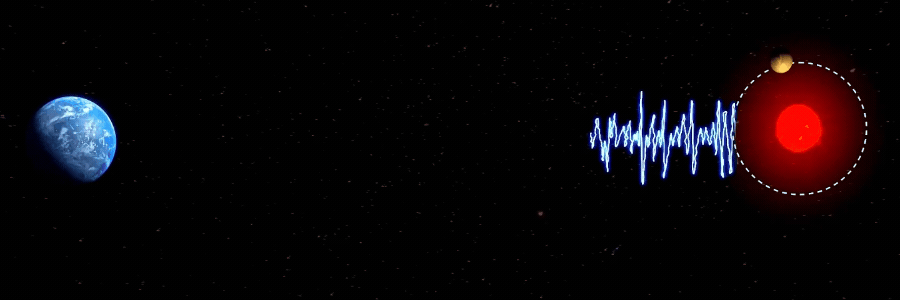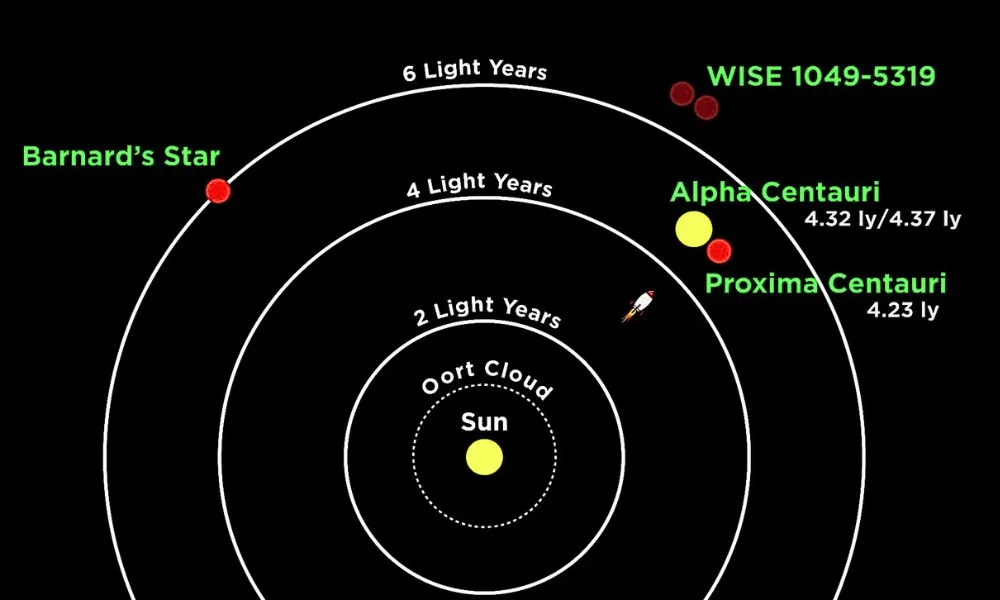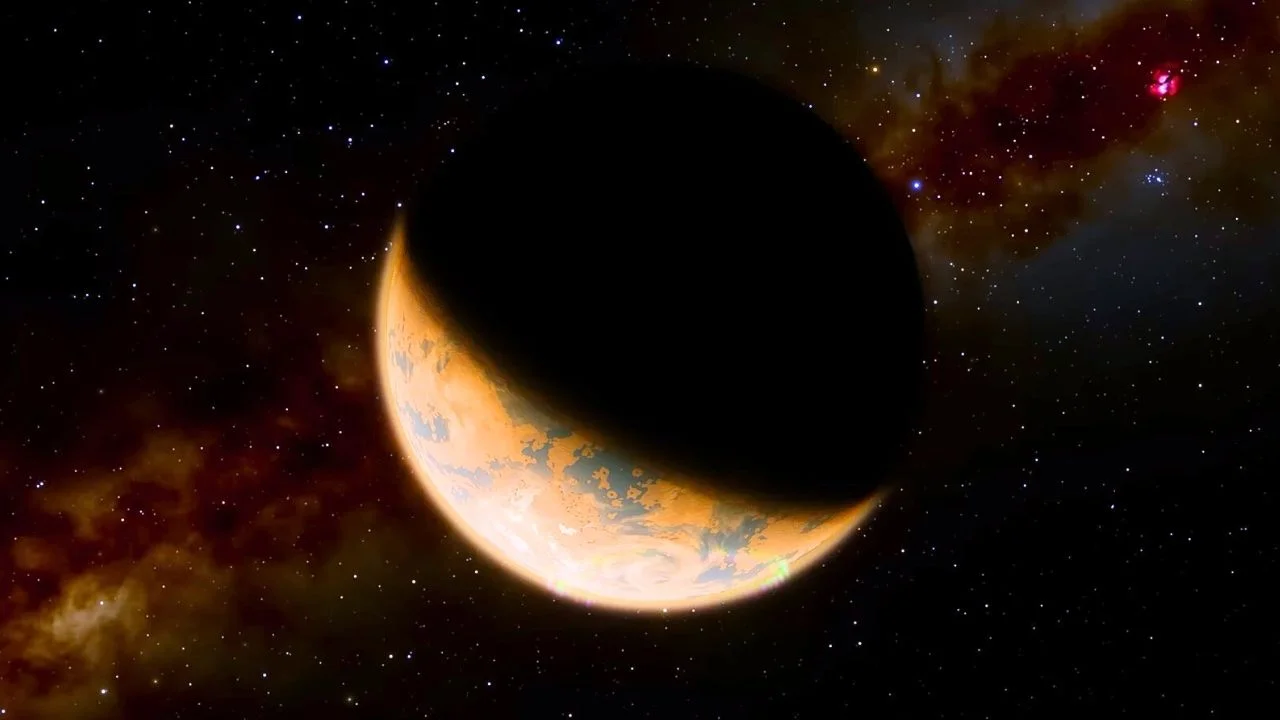Proxima Centauri b is our nearest known exoplanet neighbor, located just four light-years away. Proxima b, an exoplanet larger than Earth, orbits an M-class star. Its mass is 1.27 Earth masses, the duration of its orbit is 11.2 days, and its distance from its star is 0.0485 AU.
Proxima b receives blasts of strong ultraviolet (UV) rays from its star, Proxima Centauri, that are hundreds of times stronger than what Earth receives from the Sun within the star’s habitable zone. Over time, the energy produced by that radiation will dissolve heavier elements like oxygen and nitrogen in addition to the lightest molecules, hydrogen.
Is Proxima Centauri Good for living?
It isn’t absolutely possible for a planet to support life just because its orbit falls within the habitable zone, which is the range from its parent star where liquid water might collect on the planet’s surface.

For example, it ignores whether water is truly present on the planet and whether an atmosphere might survive in that orbit. The preservation of a water-friendly surface pressure, protection from harmful space weather, and the storage of life’s chemical parts are all made possible by the presence of atmospheres, which are also necessary for life.
Strong ultraviolet and X-ray emissions from Proxima Centauri, like those from other M stars, could confuse the story of how life first developed on a neighboring planet. The planet surrounding Proxima Centauri may have had a lower beginning water content than the ocean of Earth, according to a model that was published in a paper published yesterday. However, this is unknown.
This means that if Proxima b acquired about the same amount of water that Earth did at first, there should still be a lot of water, which increases the possibility of life.
Also, we are unsure of the planet’s capability to protect its surface from Proxima Centauri’s powerful rays through a geomagnetic field. This could be important for survival.
Position of Proxima Centauri
Proxima is a star in the sky that looks in the direction of the centaur constellation, Centaurus. The most beautiful place to view that southern constellation on Earth is in the southern hemisphere. Actually, many seasoned northerners say that they’ve never seen Alpha Centauri, despite the fact that it may be viewed from very southern latitudes in the northern part of the world.
About 0.5 light-years from Proxima from Alpha Centauri A and B.

Structure, volume, and size of Proxima centauri
If Proxima Centauri b formed close to its current separation from the star, it most likely did so in environments similar to Earth’s, with less water, more powerful effects, and a generally faster rate of development. Given the lack of material in the protoplanetary disk, Proxima Centauri b most likely did not develop at its current distance from Proxima Centauri.
Actually, it is more believable that the planet, or protoplanetary pieces, originated at greater distances before moving to Proxima Centauri b’s present orbit. The initial material may be rich in gases, depending on its composition. Different compositions may come from a number of expected creation processes, many of which are dependent on having more planets surrounding Proxima Centauri.
Proxima Centauri b’s minimum mass is predicted to be 1.173±0.086 of earth mass as of 2020. Other estimates are similar, with the most current estimate being at least 1.07±0.06 of earth mass. However, the data is low because it is unknown how high the planet’s orbit is. This puts it in line with Earth. But the planet’s radius is unknown and difficult to calculate; estimates based on interest composition range from 0.94 to 1.4 of the earth’s radius.
If its mass is lower than previously thought, it may also border on the boundary between Earth-type and Neptune-type planets. Proxima Centauri b’s composition may make it anything from a water-rich planet to a planet similar to Mercury with a big core, which would need particular conditions early in the planet’s history.
As of 2021, nothing is known about Proxima Centauri b except for the orbit’s duration and distance from the star, but multiple models of its features have been carried out.
A variety of Earth-like composition simulations and models have been developed, including ones that predict the galactic environment, the amount of volatile species present on Earth, the effects of brilliant radiation, solar rotation, internal heat generation from the decay of radioactive substances, magnetic induction heating, and changes in these factors over time.
FAQs
What would be the duration required to arrive at Proxima Centauri?
At this rate of speed, Voyager would take more than 73,000 years to reach Proxima Centauri. It would still take 4.22 years to get there even if we could travel at the speed of light, which is impossible because of special relativity!
What is the Proxima Centauri B distance from Earth?
It is located in the constellation Centaurus and is approximately 4.2 light-years from Earth. Proxima b and the currently contested Proxima c are the nearest known exopslanets to the Solar System.
Does Proxima Centauri B have water?
It is possible that Proxima Centauri b kept its water after its early existence. If there is an atmosphere, gases like carbon dioxide and oxygen are probably present.
Is Proxima Centauri in the Milky Way galaxy?
With an orbital phase of 0.07, Proxima Centauri orbits the Milky Way at a distance from the center of the galaxy that ranges from 27 to 31 kly (8.3 to 9.5 kpc).
Is Proxima Centauri B habitable?
According to the report, the proxima century is the closest star to the earth, which is habitable.
Conclusion
The proxima centauri, which is the closest star to the earth, is heritable for life. As per the report, the ultraviolet ray and the x-ray, which fall in the proxima century, are 100 times stronger than earth.
The planet surrounding Proxima Centauri may have had a lower beginning water content than the ocean of Earth, according to a model that was published in a paper published yesterday. However, this is unknown. This means that if Proxima b acquired about the same amount of water that Earth did at first, there should still be a lot of water, which increases the possibility of life.
The orbits of proxima centauri fall under the heritable orbit, which means this planet is heritable. It can be seen in the direction of the constellation Centaurs. At night, in the direction of the constellation Centaurs, the proxima Centauri looks great. But scientists are not fully sure whether the proxima centauri will support life or not, but in the future, we will research the proxima centauri.







Some truly interesting points you have written.Helped me a lot, just what I was looking for : D.